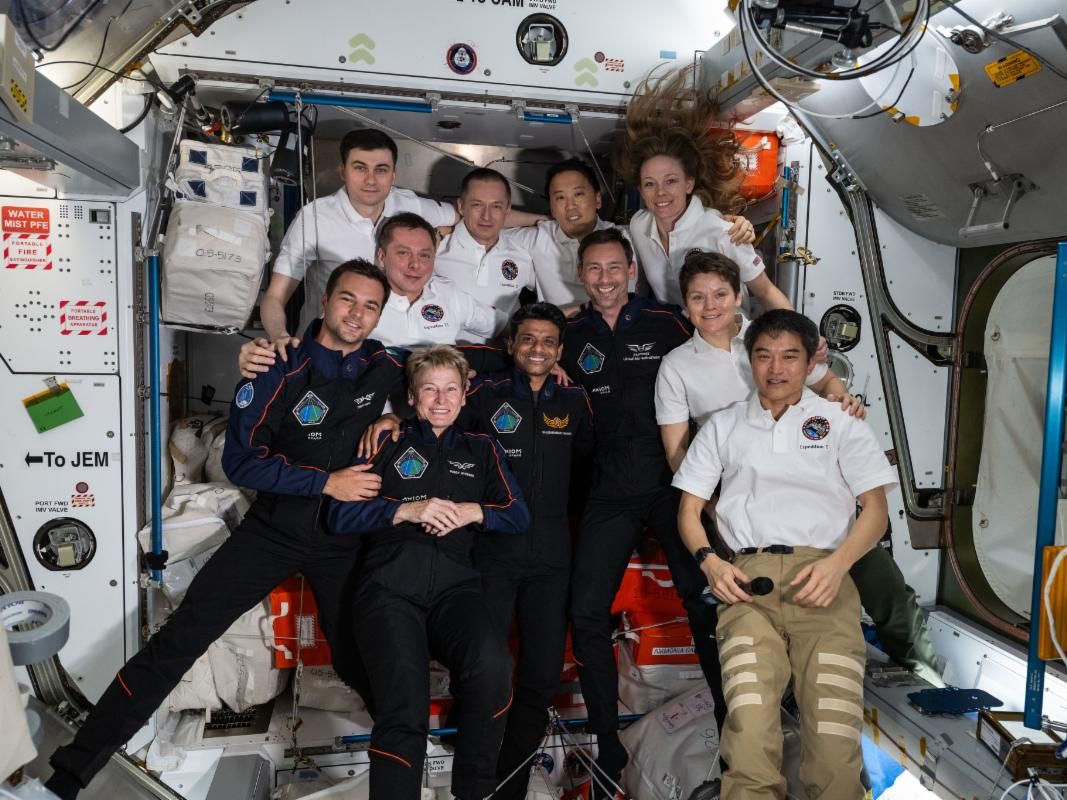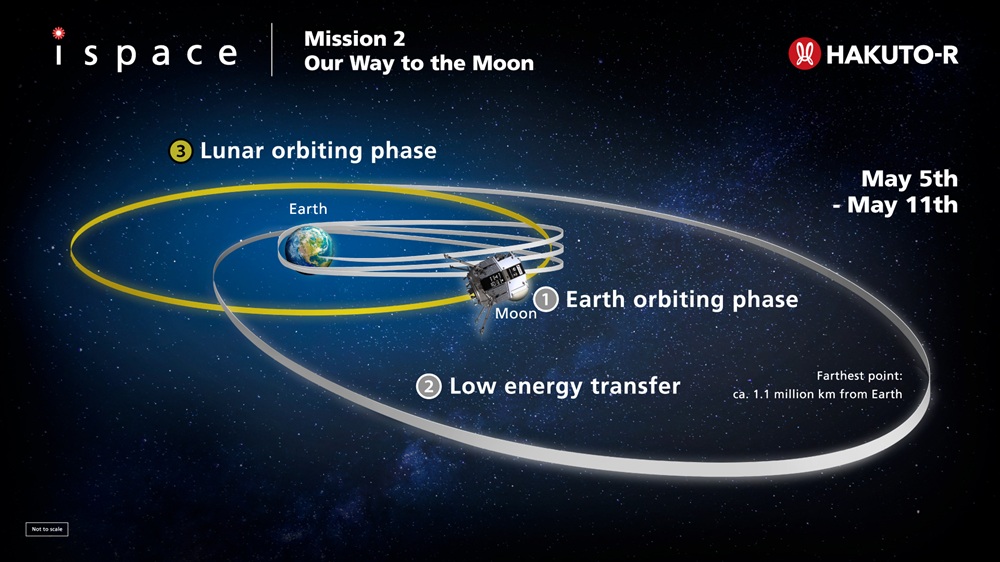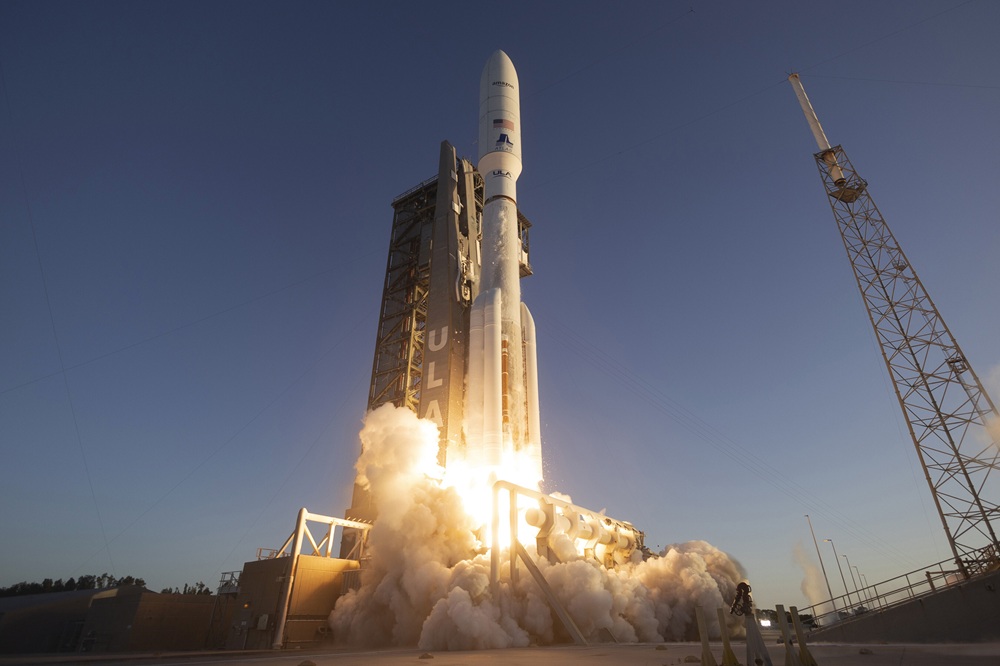International Space Station (ISS): NASA is set to provide live, comprehensive coverage of the undocking and departure of the private astronaut mission Axiom Mission 4 (Ax-4) from the International Space Station. This milestone event marks another significant step in the expanding partnership between government space agencies and private spaceflight companies, highlighting the evolving future of human space exploration.
Axiom Mission 4 Crew Preparing for Return to Earth
The four-member Axiom Mission 4 crew is scheduled to undock from the space-facing port of the ISS’s Harmony module aboard the SpaceX Dragon spacecraft at approximately 7:05 a.m. EDT on Monday, July 14, 2025, pending favorable weather conditions. Following undocking, the crew will begin their journey back to Earth, culminating in a splashdown off the coast of California.
The astronauts — Peggy Whitson, former NASA astronaut and current director of human spaceflight at Axiom Space; Shubhanshu Shukla from the Indian Space Research Organization (ISRO); Sławosz Uznański-Wiśniewski, a European Space Agency (ESA) project astronaut from Poland; and Tibor Kapu, representing Hungary’s HUNOR (Hungarian to Orbit) program — will have spent nearly two weeks conducting scientific research and technology demonstrations aboard the ISS.
Live Broadcast Schedule and Viewing Information
NASA’s live coverage will begin early Monday morning, offering viewers an up-close look at the critical departure operations. The full schedule (all times Eastern, subject to change based on real-time mission updates) is as follows:
- 4:30 a.m. EDT — Hatch closing coverage begins on NASA+
- 4:55 a.m. EDT — Crew enters Dragon spacecraft, followed by hatch closure
- 6:45 a.m. EDT — Undocking coverage begins on NASA+, Axiom Space, and SpaceX channels
- 7:05 a.m. EDT — Scheduled undocking from the ISS
NASA’s live broadcast will conclude approximately 30 minutes after undocking, once joint operations with Axiom Space and SpaceX are complete. Following this, Axiom Space will continue coverage of the Dragon capsule’s re-entry and splashdown on its official website.
For viewers interested in following the event, NASA content is accessible across multiple platforms, including NASA+, social media channels, and partner websites.
The Dragon spacecraft will return to Earth carrying more than 580 pounds of cargo, including NASA hardware and invaluable data from over 60 experiments conducted during the mission. These scientific investigations span a wide range of disciplines, contributing to ongoing research in microgravity and advancing knowledge in space technology.
Axiom Mission 4 also represents a landmark collaboration between NASA and ISRO, fulfilling a commitment made by U.S. President Donald Trump and Indian Prime Minister Narendra Modi to send the first ISRO astronaut to the ISS. This mission included five joint science investigations and two in-orbit STEM (science, technology, engineering, and mathematics) demonstrations, underscoring the deepening partnership between the two space agencies.
In addition, the mission proudly carried the first astronauts from Poland and Hungary to live and work aboard the ISS, marking historic milestones for both nations and expanding the international footprint of human spaceflight.
The International Space Station continues to serve as a vital springboard for NASA’s vision of a thriving low Earth orbit economy. By fostering partnerships with private companies like Axiom Space and SpaceX, NASA aims to purchase reliable, cost-effective services in microgravity, allowing the agency to concentrate resources on its ambitious Artemis program targeting the Moon and Mars.
NASA’s commercial space strategy emphasizes developing a sustainable ecosystem in LEO, where multiple customers—including NASA—can access a range of services to support scientific research, technology development, and crewed missions. This approach not only reduces costs but also accelerates innovation and expands opportunities for international collaboration.
As NASA prepares for future deep space missions, the ISS remains a critical proving ground for technologies, operations, and human factors research essential for long-duration spaceflight beyond Earth orbit.





